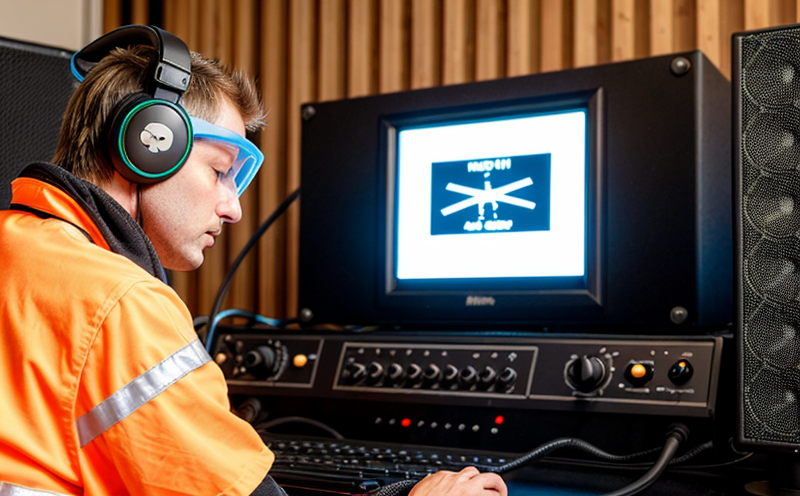ISO 8124-1 Repetitive Noise Emission Safety Test
The ISO 8124 series of standards addresses safety requirements for toys. Specifically, ISO 8124-1:2019 pertains to the mechanical and physical properties of toys. One critical aspect under this standard is the repetitive noise emission test, which ensures that toys do not produce excessive noise levels capable of causing harm or discomfort.
This test involves subjecting a toy to repeated activation (such as pushing buttons or pulling levers) over time to evaluate how it behaves and emits sound during prolonged use. The goal is to identify any potential hazards associated with the repetitive operation of the toy, especially focusing on noise levels that could pose risks to children's hearing health.
The test procedure outlined in ISO 8124-1:2019 specifies detailed steps for setting up and conducting the noise emission tests. It includes measures like placing the toy in a controlled environment, simulating real-world usage scenarios, and measuring sound levels at various points during activation cycles. Compliance with these standards helps manufacturers ensure their products meet international safety requirements.
Failure to comply can result in product recalls or bans, affecting brand reputation and market access. Therefore, conducting thorough testing ensures that toys are safe for children while also protecting brands from potential legal issues.
A deeper look into the methodology reveals that noise measurements must be taken at specific intervals throughout the test cycle. These measurements help determine whether there is any increase in sound intensity over time which could indicate a design flaw or material issue affecting safety and comfort.
The importance of this testing cannot be overstated, particularly given today's emphasis on child welfare and product safety standards across global markets. By adhering to these guidelines, manufacturers can guarantee their products meet regulatory requirements and consumer expectations regarding noise emissions from toys.
Why It Matters
The ISO 8124-1:2019 standard plays a crucial role in safeguarding children's health and well-being by ensuring that toys meet stringent safety criteria. Excessive noise from toys can lead to hearing damage, especially among young children whose ears are still developing. This test helps prevent such issues by identifying potential hazards early on during product development.
- Prevents Hearing Damage: Repeated exposure to loud noises can cause permanent hearing loss in children if not controlled properly. By testing toys for noise emissions, manufacturers can minimize this risk.
- Enhances Brand Reputation: Compliance with international standards like ISO 8124-1:2019 enhances a company’s reputation as being committed to safety and quality control.
- Avoids Legal Issues: Non-compliance with these regulations can result in hefty fines, product recalls, or even legal action. Ensuring adherence through rigorous testing mitigates these risks.
In summary, the ISO 8124-1:2019 repetitive noise emission safety test is essential for manufacturers who want to produce safe and reliable toys that meet global standards while maintaining their brand’s integrity and avoiding costly legal battles.
Industry Applications
The ISO 8124-1:2019 repetitive noise emission safety test finds application primarily in the toy manufacturing sector. However, its principles can also extend to other industries dealing with products designed for children or those that might produce significant noise during operation.
Manufacturers of electronic devices targeted at young users may benefit from this testing method as well since many such gadgets incorporate components similar to those found in toys. Additionally, companies involved in creating musical instruments intended for educational purposes could use these guidelines to ensure their products comply with relevant safety norms.
In essence, any organization producing goods that involve repetitive mechanical actions and are likely to generate sound should consider implementing this type of testing as part of its quality assurance process.
Why Choose This Test
- Comprehensive Testing: The ISO 8124-1:2019 test provides a comprehensive evaluation of noise emissions from toys under simulated use conditions.
- International Recognition: Compliance with these standards ensures that your product meets international safety requirements and can be sold in various markets worldwide.
- Rigorous Methodology: The detailed procedures outlined in the standard ensure consistent results across different laboratories, enhancing reliability.
- Prompt Issue Identification: Early detection of potential issues allows for timely corrections before mass production begins, saving time and resources.
- Enhanced Customer Trust: By demonstrating commitment to safety standards, you build trust with consumers and strengthen brand loyalty.
- Legal Protection: Adherence to these regulations protects both the manufacturer and retailer from potential legal challenges associated with non-compliance.
- Cost Efficiency: Investing in this type of testing upfront can save money in the long run by avoiding costly product recalls or lawsuits.
Choosing the ISO 8124-1:2019 repetitive noise emission safety test demonstrates your commitment to producing high-quality, safe toys that meet global standards. This not only enhances consumer confidence but also ensures compliance with international regulations and promotes a positive brand image.





